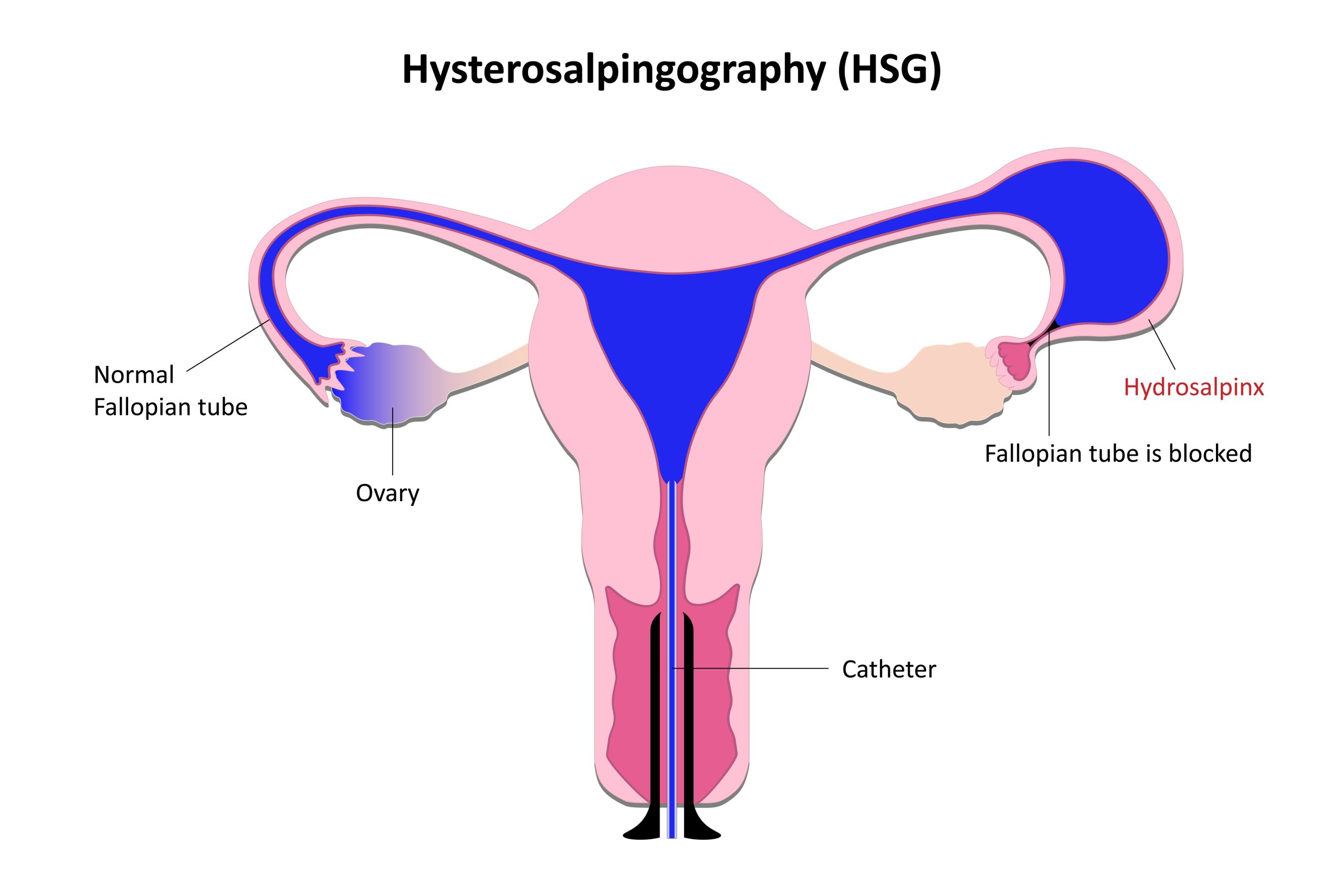
Hysterosalpingography (HSG) is a specialized X-ray procedure that evaluates the condition of the uterus and fallopian tubes. This test plays a crucial role in diagnosing potential issues that may affect fertility, making it a key step before in-vitro fertilization (IVF) treatment. By identifying problems such as blockages in the fallopian tubes or abnormalities in the uterus, HSG ensures that IVF procedures have the highest chance of success.
Hysterosalpingography, commonly referred to as an HSG, is a diagnostic imaging procedure used to assess the reproductive organs in women. Specifically, it examines the uterus and fallopian tubes to detect abnormalities like blockages, scar tissue, or structural issues that could impact fertility. If you’re wondering, “What is a hysterosalpingography?” or “What is hysterosalpingography?”—this procedure is essentially a fertility test that provides doctors with detailed information about the reproductive system’s condition.
The hysterosalpingography test is performed using a contrast dye and an X-ray to visualize the organs clearly. This allows doctors to pinpoint issues that could hinder natural conception or interfere with IVF success.
HSG is an essential diagnostic tool for women experiencing difficulty conceiving. Many fertility problems stem from undetected issues in the uterus or fallopian tubes, such as blockages or irregular shapes. These issues are often asymptomatic, making HSG critical in uncovering them.
For women preparing for IVF, the HSG process is especially important. It provides a roadmap for treatment, ensuring that conditions like tube blockages or uterine fibroids are identified and addressed before proceeding. Fertility specialists, including those at top facilities, use HSG results to optimize treatment plans.
 How is Hysterosalpingography Performed?
How is Hysterosalpingography Performed?The hysterosalpingography process is straightforward and typically completed in a hospital or clinic. If you’re curious about “how is hysterosalpingography done,” here’s an overview:
The entire procedure usually takes about 30 minutes and is minimally invasive.
A common concern is, “HSG test is it painful?” Most women experience mild discomfort rather than pain during the procedure. The sensation is often described as a brief cramping similar to menstrual cramps. Pain levels can vary depending on individual sensitivity and whether the fallopian tubes are blocked.
Timing is crucial for accurate results. Experts recommend scheduling the HSG test during the first half of the menstrual cycle, typically between days 5 and 10. This ensures the uterine lining is thin, providing clearer images while minimizing the risk of interfering with an early pregnancy.
If you’re wondering, “When is the best time to do HSG test?”—the ideal window is shortly after your period ends but before ovulation begins.
After undergoing a hysterosalpingography (HSG) procedure, it’s natural to have questions about what to expect and how to care for yourself during the recovery process. While HSG is a minimally invasive procedure, it can cause temporary physical symptoms and emotional reactions. Here’s a detailed overview of what typically happens after the procedure, along with tips for recovery and when to seek medical attention.
Once the HSG test is complete, the healthcare provider will remove the catheter and speculum, allowing you to rest for a few moments before leaving the exam room. Some clinics may observe you briefly to ensure there are no immediate adverse reactions to the procedure or the contrast dye. Afterward, you’ll likely be able to go home the same day and resume light activities, depending on how you feel.
Common Symptoms Post-HSG Include:
Most women recover quickly from an HSG test, but there are a few things to keep in mind to ensure a smooth recovery:
After the HSG process, patients should monitor for any signs of infection, such as fever or unusual discharge. It’s also advisable to avoid sexual activity for a few days to reduce the risk of infection. Over-the-counter pain relievers can help alleviate any lingering discomfort.
The advantages of HSG test are numerous, particularly for women facing fertility challenges. These include:
However, like any medical procedure, HSG carries some risks. These include:
For women undergoing IVF, the benefits of HSG test cannot be overstated. This diagnostic tool ensures that potential obstacles to implantation or pregnancy are addressed before treatment begins. By identifying and resolving these issues, HSG enhances the likelihood of a successful outcome.
At leading fertility centers, such as a IVF Treatment in Cyprus, HSG is an integral part of the pre-IVF evaluation. The detailed insights gained from the test help fertility specialists customize protocols, increasing the odds of a positive result.
Hysterosalpingography is a vital diagnostic tool for women facing fertility challenges, particularly those preparing for IVF. By answering questions like “What is hysterosalpingography?” and “How is hysterosalpingography done?” this blog aims to demystify the process and highlight its importance.
Whether you’re wondering, “HSG test, is it painful?” or trying to determine “When is the best time to do HSG test?” understanding the procedure helps reduce anxiety and ensures you’re well-prepared. With its many advantages, hysterosalpingography remains an essential step in the journey to parenthood, offering hope and clarity to countless women worldwide.